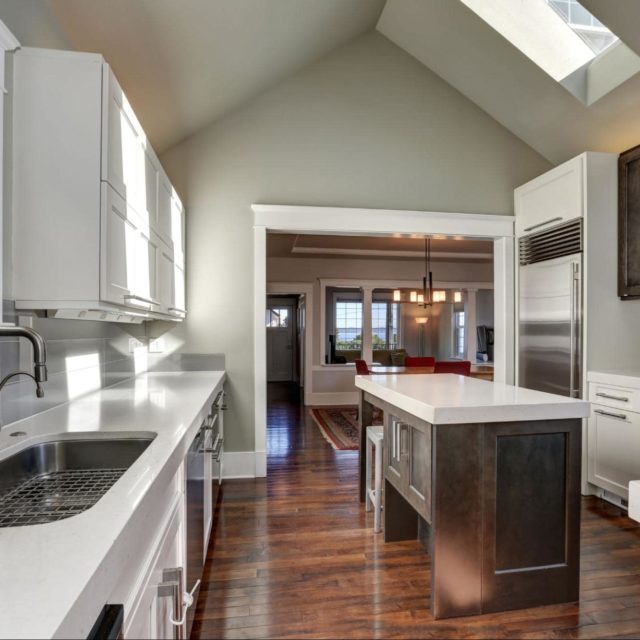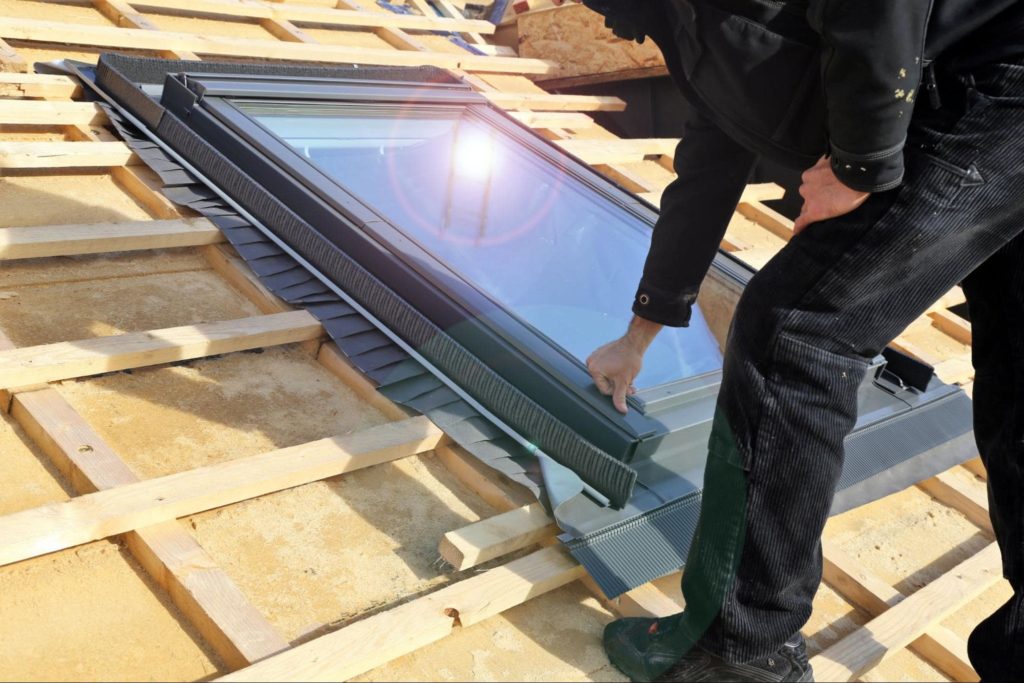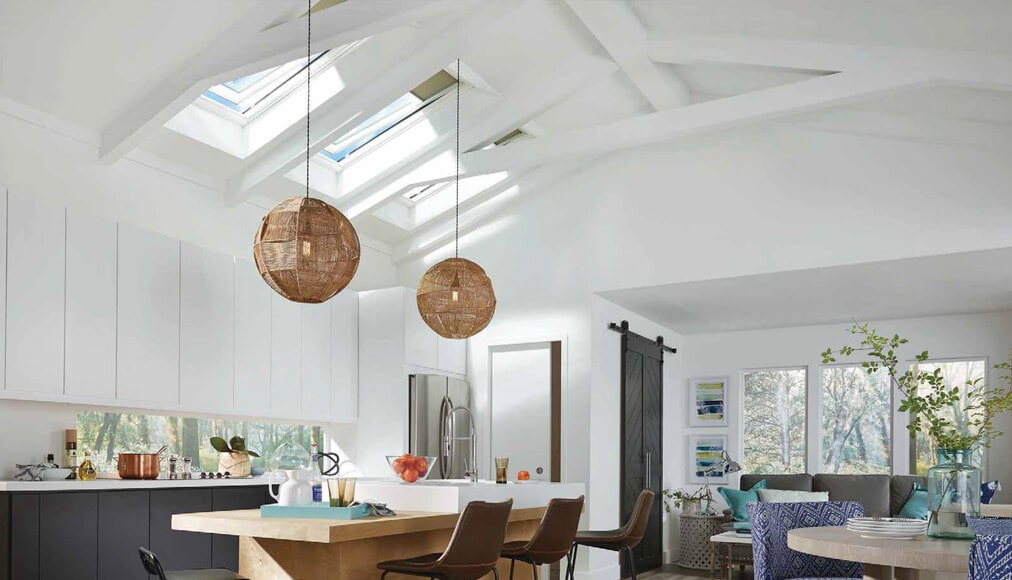What You Need to Know About Installing a Bathroom or Kitchen Skylight

- Written by: jlbmdev

There are a few important components to consider before installing a bathroom or kitchen skylight — including the possibility of moisture leaks, what style skylight will work best for your home, and the best place to have it installed. This blog will cover the ins and outs of incorporating a small or large skylight into your kitchen or bath and how to choose the right style for your home.
Before we dive into the five things to consider before determining if a skylight is right for you, let’s take a look at three popular benefits of a bathroom or kitchen skylight.
Skylights are practical and allow you to breathe new life into your home. Now that we’ve covered some of the benefits, let’s take a look at some of the most important need-to-knows of adding a skylight to your home.
Skylights can help you enhance your current space and enhance your home’s resale value. But before you choose to move ahead with the investment, there are a few important considerations.
From fixed skylights to bubble skylight installation, the placement of your bathroom or kitchen skylight depends largely on where your rafters are located — or where they’re not located. Certain roof materials — like asphalt shingles and metal — are easier to cut through without causing damage or stress to adjacent areas. This doesn’t mean that tile or stone roofs can’t have a skylight, but these materials are more likely to crack or break.
A chase is a framed tunnel that transports light from the skylight in a kitchen or bath through your attic space and down to the ceiling below. A chase is typically finished with drywall and paint and can be complex to build. You definitely won’t need a chase if you have a cathedral ceiling, though you may need a contractor to install one if you have a flat ceiling.
The direction of your skylight is important. Generally, north-facing skylights are ideal — as they supply continuous year-round illumination and warmth. As best you can, you should avoid positioning your skylight where your view would be blocked by large trees, buildings, or other objects.
Depending on what you’re looking for, certain styles of bath or kitchen skylights will suit different needs. It’s also important to keep in mind that each style of skylight provides varying degrees of ventilation and energy performance. Popular styles of skylights include:
While some types of skylights make more sense than others in certain rooms, it depends on what you want and what your contractor recommends based on your home’s style and roof materials.
If you don’t have an attic, you can skip this section.
Once you know where your skylight will be installed, you’ll want to check the attic for any HVAC, wiring, or plumbing that could get in the way. If your attic contains any HVAC wiring or plumbing, you’ll want to consult your contractor on the best way to move forward before installing your skylight.

Installing a skylight yourself isn’t the best choice for longevity, as you’ll want to ensure it’s fitted and fully insulated for your property. A trusted contractor will help you select the right skylight for your home, know the ins and outs of framing details for a skylight, and use the correct flashing kit recommended by the manufacturer. This will minimize the chance of leaks and water dripping onto your floor, counters, or appliances.
If you’re looking to install a bathroom or kitchen skylight in a flat ceiling, this process will require more drywall work than a vaulted ceiling. However — as is the case with many components of a bath or kitchen remodel — a contractor can complete this project with relative ease.
Skylight condensation typically occurs when warm, moist air rises to the ceiling and comes into contact with the colder glass surface of the skylight. The root of skylight condensation is the conversion of vapor into liquid when air pockets become saturated with moisture and are released as water droplets.
Several tell-tale signs of condensation include:
While skylight condensation isn’t uncommon, there are some simple steps you can take to enhance the ventilation of your home and reduce the possibility of condensation:

Skylight fitting, installation, and condensation prevention can sound like a lot of work. Many skylight manufacturers on the market may make the process of finding the right bathroom or kitchen skylight seem overly difficult.
Fortunately, VELUX skylights are a go-to for homeowners looking for unmatched quality and options. Here’s a snapshot of the products you can select, along with a few pertinent details:
When you choose qualifying Velux products, you can also receive a 30% tax credit, thanks to the Emergency Economic Stabilization Act (2008), and the American Recovery & Reinvestment Act (2009).
Always be sure to partner with a licensed contractor. A trusted skylight contractor with the necessary qualifications will be up to date on your neighborhood’s building codes and required permits. Also, don’t be afraid to ask questions and get to know your contractor — every good contractor is excited to get to know you and what you hope to get out of the project.